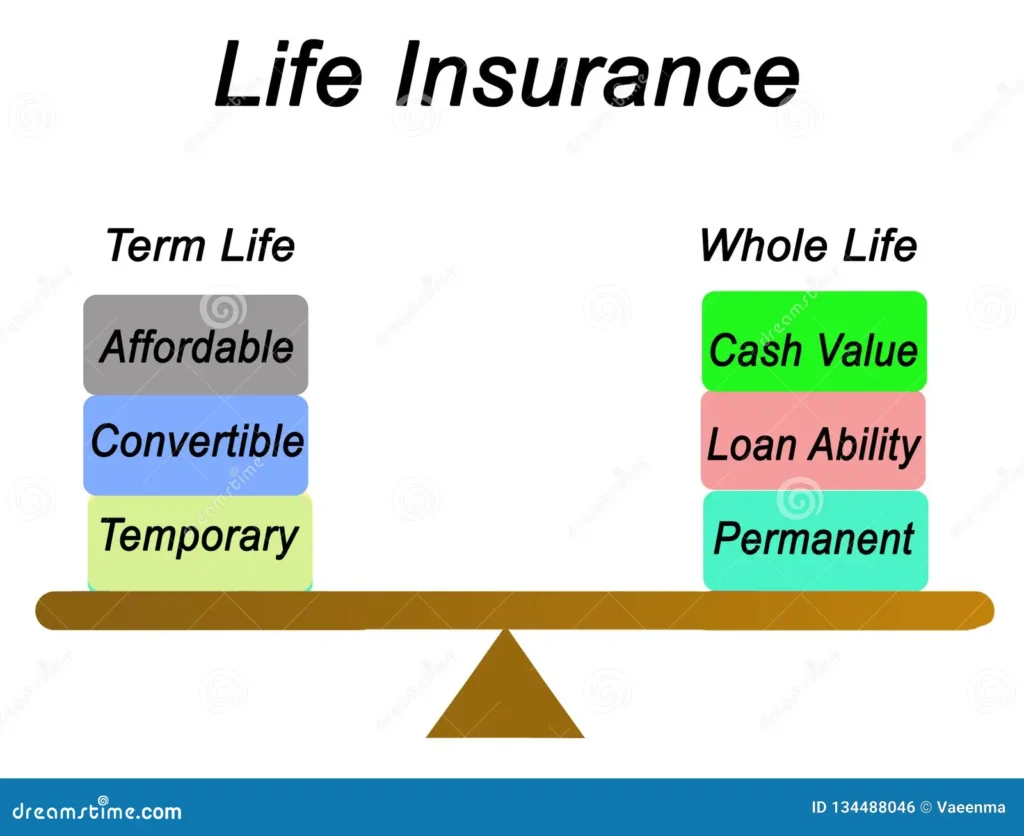
Of course, one of the most popular and affordable ways to protect the financial well-being of your family in case anything happens to you is through Term Life Insurance. Term life is one wherein you pay regular premiums for a set period, and upon your death prior to the term’s end, your beneficiaries receive a death benefit. It is just a simple form of life insurance that offers, for a set period, ten, twenty, thirty years, or so, financial security.
Not all Term Life Insurance is created equal, though. In Canada, there are two primary types of
Term Life Insurance: level Term Insurance and decreasing Term Insurance. This is useful information as it can assist you in making the proper decision for your needs and budget. We will examine the specific differences between both types of Term Insurance, their advantages, and what to consider in the selection of the right one.
Choosing the Right Term Insurance
You quickly learn that, as in the real world, there is nothing uniform under the umbrella of Term Insurance. You have to choose between level-term and decreasing-Term Insurance, each serving a different purpose according to your financial goals.
For many, Term Insurance is the most affordable flexible policy: providing coverage during years when your family depends on you for even their essential living expenses, including paying off a home mortgage, saving for a child’s education, and more. Depending on which type of Term Insurance you opt for, it will have a major impact on what coverage you pay for and at what cost.
Let’s dive into the two major types of Term Insurance in Canada: level Term Insurance and decreasing Term Insurance. How each of these actually works explains their differences.
Level Term Insurance: Predictable Coverage with Fixed Premiums
Level-Term Insurance is the most common and best-known term life type. Its name says it all: the coverage amount is “level” or constant over the term of the policy. No matter what type of policy you buy–10-year, 20-year, or 30-year-there will be no change, no matter when you die during the term.
How Does Level Term Insurance Work?
With level Term Insurance, you set forth an amount of money to be covered (this is often referred to as the death benefit) and a term for that death benefit when purchasing the policy. If you die within the term, the death benefit you elected will be paid in full to your loved ones. Continuing on the example above, if you elect to purchase a $500,000 death benefit over a term of 20 years, that death benefit still equals $500,000 over the duration of those 20 years.
A level term has the benefit that your premium payments are level. Therefore, you will always pay the same amount each month or year during the full term’s duration, making it easy to budget for. The coverage and premiums being level make the quotes for level-term policies pretty easy to compare between providers.
Who Should Consider Level Term Insurance?
Level Term Insurance is ideal for individuals who want predictable, consistent coverage to protect their families from significant financial obligations, such as:
- A mortgage
- Children’s education expenses
- General living expenses for dependents
The fixed nature of level-Term Insurance makes it very apt to those who would want to ensure that their loved ones are in a good position to maintain their lifestyle and pay essential costs if the policyholder should die,
For example, if you are the bread earner, and your family depends on your income, then a level term would ensure that they receive the lump sum that would take care of the cost several years after the policy is bought.
Advantages of Level Term Insurance
- Fixed Premiums: The Term Life Insurance Monthly Cost is consistent throughout the policy, which helps with long-term budgeting.
- Predictable Coverage: Your beneficiaries will always receive the full death benefit, no matter when you pass away during the term.
- Simple Comparisons: Because the premiums and coverage amount stay constant, it’s easier to compare Term Life Insurance Quotes from different providers and find the best deal.
Factors to Consider
While level Term Insurance offers stability, it’s important to remember that once the term expires, you no longer have coverage unless you renew the policy. Renewing typically leads to higher premiums, as your age and health conditions will factor into the new rates.
Moreover, some individuals might find they no longer need the full coverage amount as they age and their financial responsibilities decrease, which is where the next type of Term Insurance—decreasing Term Insurance—comes in.
Decreasing Term Insurance: Coverage That Shrinks Over Time
This type of life insurance is decreasing Term Insurance wherein the benefit of death reduces with the passage of time. In other words, in terms of Term Insurance, the coverage amount does not vary; decreasing Term Insurance is designed to provide lesser coverage with the passage of time.
How Does Decreasing Term Insurance Work?
Term Insurance usually decreases the death benefit incrementally using a formula over the term of the policy. Often, this is structured so the death benefit tracks a certain financial obligation, such as a mortgage, that depletes in size over time.
For example, take out a 25-year decreasing term policy to fund a $300,000 mortgage: as you pay off your mortgage every year, the death benefit will reduce every year. If you die in the early years of the policy, your beneficiaries will receive a higher payout to pay off any remaining mortgage balance. But if you die at a later date in the term, then the payment will be lesser because the remaining balance outstanding on the mortgage would have been reduced.
Who Should Consider Decreasing Term Insurance?
Decreasing Term Insurance is ideal for individuals who want life insurance specifically to cover debts that reduce over time, such as:
- Mortgage balances
- Car loans
- Other diminishing debts
In case you believe that for you to enjoy peace of mind, it is important that your loved ones use what is left of the mortgage or loan balance to pay it off, then perhaps for you, the decreasing term will prove more economical than the level term. Anyway, the premiums attached to the former are usually lower because the risk of the insurer decreases as the coverage amount reduces.
Advantages of Decreasing Term Insurance
- Lower Premiums: Since the coverage amount decreases, the monthly cost of Term Life Insurance is usually lower for decreasing term policies than for level term policies.
- Tailored Coverage: Decreasing Term Insurance aligns well with specific financial obligations like mortgages, which also reduce over time.
- Cost-Effective for Debt Protection: This type of insurance can be more affordable for those who need coverage solely to cover debts that diminish over time.
Factors to Consider
Lower premiums are offered by decreasing Term Insurance, but remember that it cannot offer equal protection as is offered through level Term Insurance. If your financial obligations are more than just the repayment of a mortgage or loan, then the decreasing Term Insurance may not be able to pay for what your family needs when you get older.
Furthermore, if one dies almost at the end of the term, the amount of money assured would not be enough to cover other financial obligations because, at that time, it has drastically reduced coverage amount.
Comparing the Two Types of Term Insurance
When comparing Term Life Insurance Quotes for both level and decreasing Term Insurance, you’ll notice several key differences in how the policies are structured and priced.
- Premiums: Level Term Insurance generally comes with higher premiums since the coverage amount remains constant. Decreasing Term Insurance typically has lower premiums because the death benefit decreases over time, reducing the insurer’s risk.
- Coverage Amount: With level Term Insurance, your beneficiaries are guaranteed to receive the full coverage amount if you pass away during the term. Decreasing Term Insurance, on the other hand, will provide a gradually shrinking payout that may only cover specific debts.
- Best Use: Level Term Insurance is ideal for individuals who want comprehensive, consistent coverage for a wide range of financial responsibilities. Decreasing Term Insurance is best for those looking to cover debts that reduce over time, such as mortgages or loans.
Choosing the Right Term Insurance
What you need and want to pay for can determine your choice between level and decreasing Term Insurance. If your aim is to pay for essential living expenses, children’s education, or other long-term expense requirements for your family’s well-being, you may go with level-Term Insurance.
On the other hand, if your major target is to pay off a mortgage or any other big debt, then decreasing Term Insurance will give you the coverage you require at a lower price.
Therefore, it is advisable to seek Term Life Insurance Quotes from several companies and evaluate the monthly expense of Term Life Insurance, both individually and all together, against the coverage you will need in the long run. It will also be wise to consult an insurance advisor who will be in a better position to guide you through the pros and cons of each option, depending on your financial situation.
The End
It’s a flexible and very affordable way to protect your family’s financial future, but all term policies are not alike. There are indeed two primary categories of Term Insurance, namely level term and decreasing term. They take vastly different approaches to coverage and cost. Level-Term Insurance is predictable and flat in its approach to offering consistent protection, thus fixed premiums as well, so for folks with long-term financial obligations, it is a popular pick. The other cost-effective route for people trying to pay off specific debts, such as mortgages, which are reducing over time, is decreasing Term Insurance.
Making the Comparison of Term Life Insurance Between Two Policies: Making a comparison between two different Term Life Insurance Policies will help in understanding the differences between them. Thus, it could be easier to select the right policy according to one’s needs and budget by getting the quotes.






